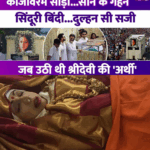Communal Tensions Flare in Fatehpur: Tomb Vandalism, Religious Claims, and Land Dispute Spark Political and Social Storm

Tension gripped Fatehpur’s Abu Nagar locality on August 11th when a famous Mughal-era tomb was vandalized. The incident, which happened on a Monday, quickly turned into a political and religious flashpoint after allegations that Hindu nationalist organizations and the local BJP district president, Mukhlaal Pal, led a group who not only damaged the structure but performed Hindu rituals there. Videos of the act went viral, escalating the controversy.
Political Uproar Reaches State Assembly
The fallout was swift. The opposition, including former CM Akhilesh Yadav, lashed out at the Yogi Adityanath-led government, accusing it of failing to maintain law and order. The Samajwadi Party raised the issue in the UP Legislative Assembly’s monsoon session, demanding action and accountability.
Amid intense debate, authorities filed criminal cases against over 150 people (including 10 named accused) on charges of damaging public property and disturbing communal harmony. However, questions remain about police action and the lack of high-profile arrests.
Was It a Tomb or a Temple?
The heart of the controversy lies in the identity of the structure itself. Hindu groups and BJP leaders insist the building is a temple, not a tomb, justifying their religious activities there. To clarify, local historian Satish Dwivedi explains that the structure is, in fact, a Mughal tomb—specifically of Abdul Samad, a faujdar (military governor) under Emperor Aurangzeb.
Dwivedi refutes claims that the building’s architectural features, such as lotus motifs or the number of domes, make it a temple. He points out that Hindu artisans frequently worked on Mughal buildings, so such motifs are not unusual. Additionally, ground plans and colonial-era maps (as early as 1850) confirm the presence of Abu Nagar and Kheldar as the only two settlements in the area, with the rest being a lake, making it unlikely for an ancient temple to exist there.
A Deeper Land Dispute
Underneath the religious claims is a simmering property dispute:
The land originally belonged to Muslims, then passed to a Kshatriya (Rajput) family, and most recently was transferred to the Waqf Board in 2012 with the help of a then-District Magistrate, during the Samajwadi Party’s tenure.
This land transfer took place quietly but later became a bone of contention, exploited amid growing polarization.
Attempts to Rewrite History?
Supporters of the “temple” narrative point to symbolic features and the open design, often associated with Hindu sites. But historians argue such architectural features are common for the period and region due to overlapping cultural influences and the use of Hindu artisans on Muslim monuments. Dwivedi says, “If anyone believes it is a temple, there is a proper legal process to raise such claims. Forced vandalism is not the way.”
Communal Tensions and Police Response
The incident is seen as a deliberate attempt to incite communal tensions. Police and administration insist that action is being taken—teams are investigating, and charges have been filed against those who damaged or disrupted public property.
But for many, the deeper issue remains: who benefits from attempts to rewrite historical narratives, and how can communal harmony be protected amid a climate of rising polarization and property disputes?
Conclusion: The Need for Rule of Law and Historical Understanding
As Fatehpur returns to a cautious calm, many call for the police to complete impartial investigations and for disputes over religious sites to be settled peacefully and legally, not through provocation or violence. Social harmony and respect for history are the need of the hour.
What do you think should be the approach in resolving disputes over historical monuments? Should ancient structures be judged on faith, history, or the law? Share your views in the comments.
News
Kerala Tragedy: Young Woman’s Suicide Note Fuels “Love Jihad” Debate—Family and Police Pursue Justice
Kerala Tragedy: Young Woman’s Suicide Note Fuels “Love Jihad” Debate—Family and Police Pursue Justice On August 9, 2025, a tragic…
A New Milestone for the Tendulkar Family: Arjun Tendulkar Gets Engaged to Sania Chandok of Mumbai’s Prominent Ghai Business Clan
A New Milestone for the Tendulkar Family: Arjun Tendulkar Gets Engaged to Sania Chandok of Mumbai’s Prominent Ghai Business Clan…
Cloudbursts and Flash Floods Wreak Havoc in Himachal: Rivers Swell, Homes Washed Away
Cloudbursts and Flash Floods Wreak Havoc in Himachal: Rivers Swell, Homes Washed Away Fresh reports from Himachal Pradesh bring grim…
Chaos in Mainpuri: Landlady’s Street Protest Over Shop Dispute Leads to High Drama and Police Action
Chaos in Mainpuri: Landlady’s Street Protest Over Shop Dispute Leads to High Drama and Police Action A dramatic scene played…
Communal Tension in Fatehpur: Congress Leaders Detained as Ancient Tomb vs Temple Row Intensifies
Communal Tension in Fatehpur: Congress Leaders Detained as Ancient Tomb vs Temple Row Intensifies Images and videos of the controversy…
Outrage in Balrampur: Disabled Woman Abducted and Gang-Raped—Police Response Under Fire
Outrage in Balrampur: Disabled Woman Abducted and Gang-Raped—Police Response Under Fire Another shocking crime has put a spotlight on women’s…
End of content
No more pages to load



